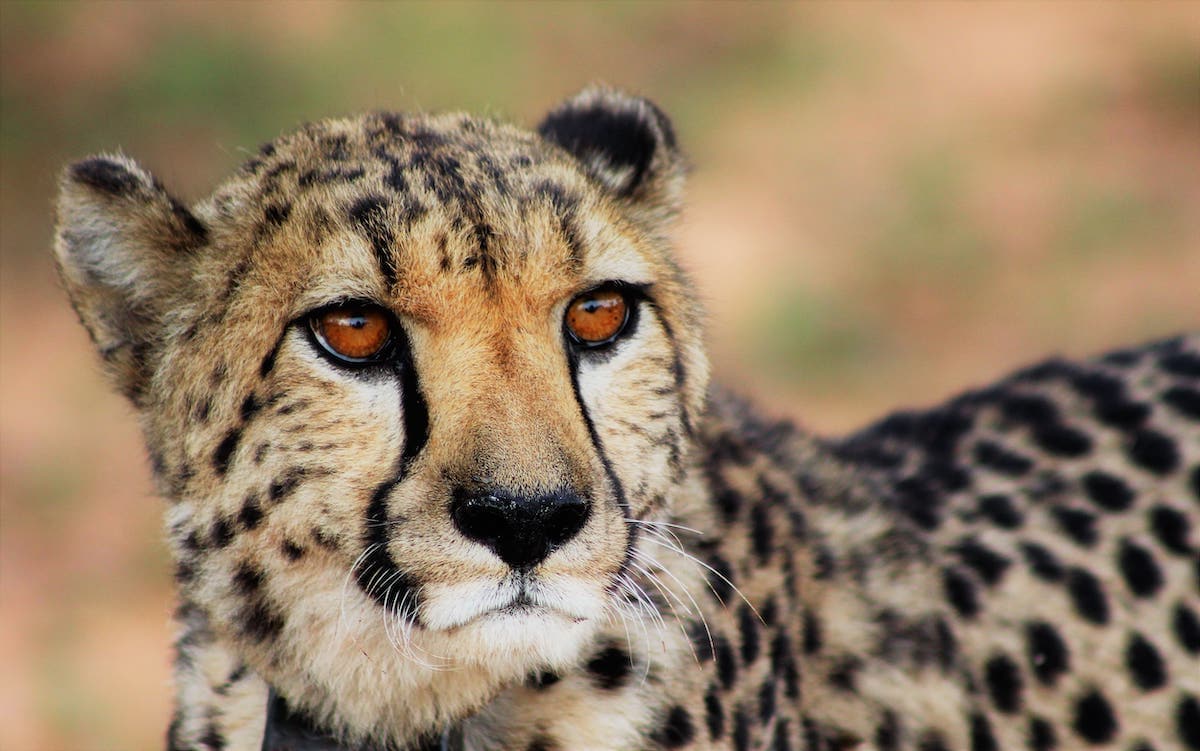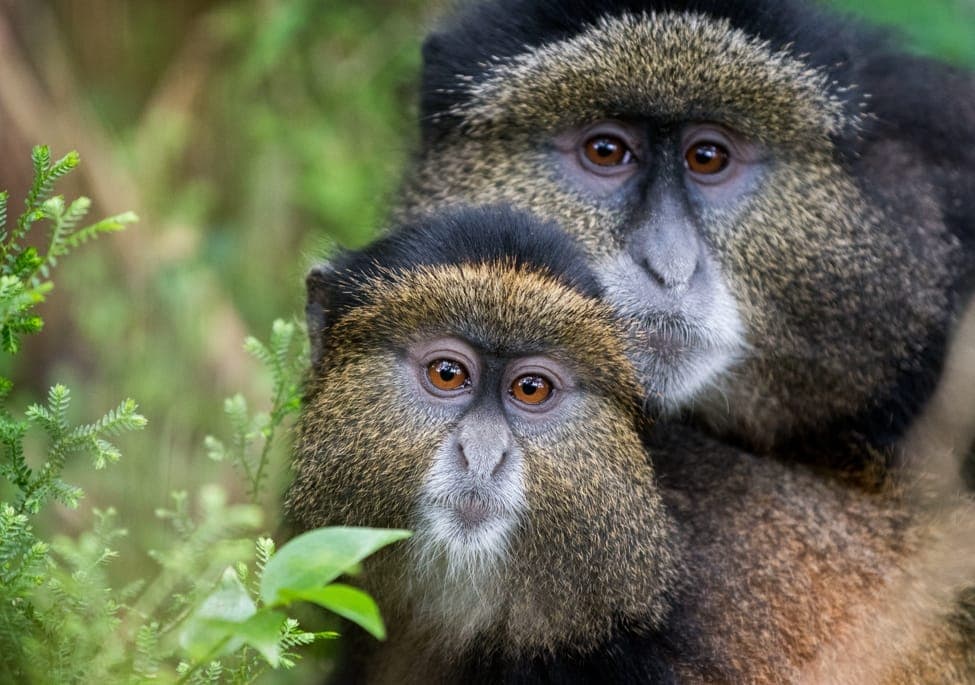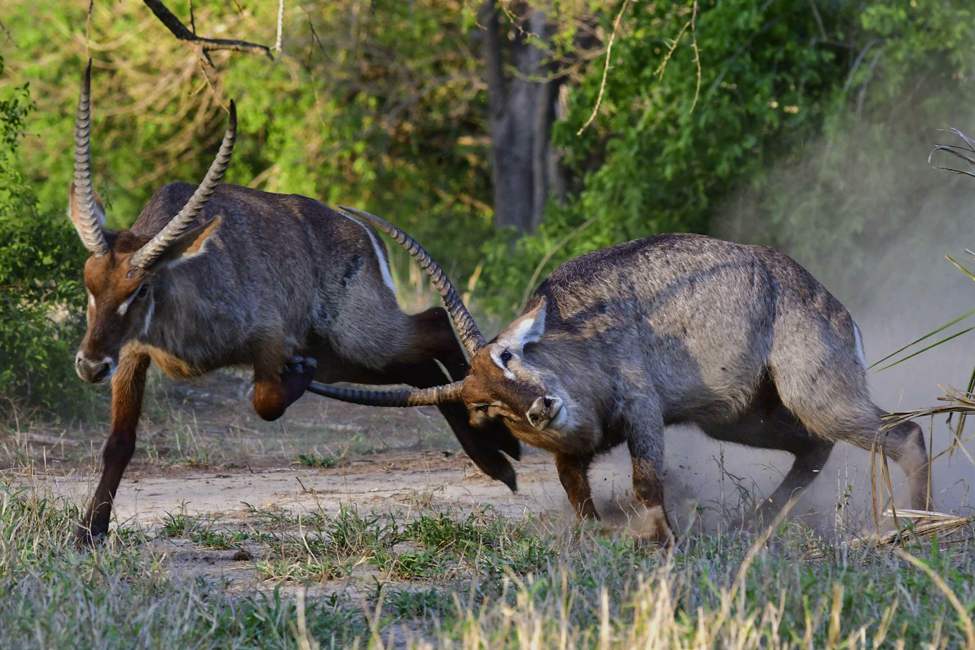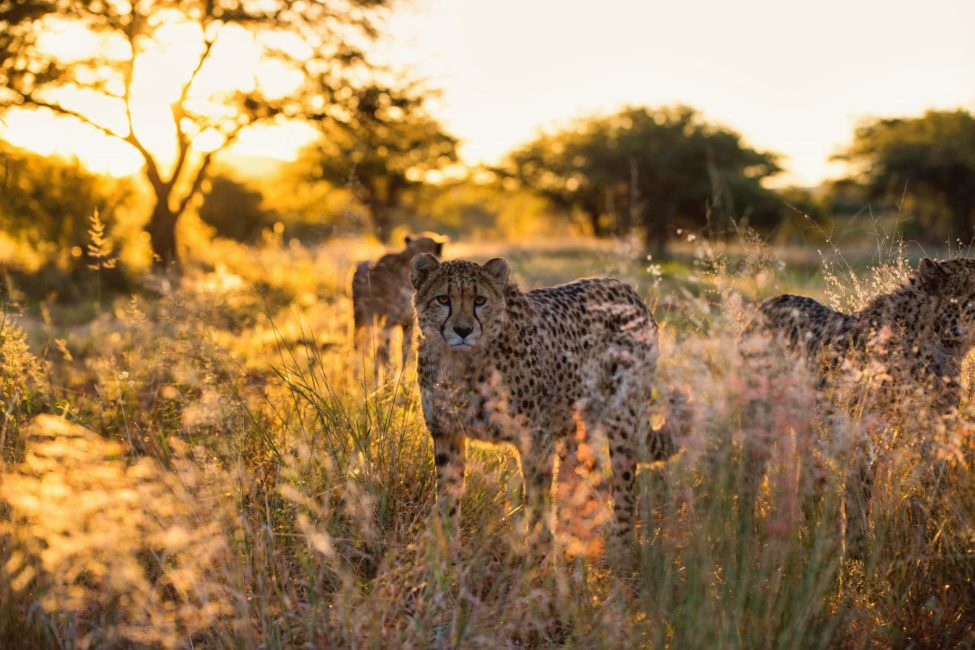Photo courtesy of AfriCat.
Why AfriCat Should Be Part of Your Namibian Safari
Headquartered in the heart of cheetah and leopard country at the base of the Omboroko Mountains, AfriCat was founded with a mission to “keep wild cats wild.” Over its three decades, AfriCat has rescued more than 1,060 predators! More than 85 percent of those have been released back into the wild.
Today the AfriCat Foundation continues its focus on the long-term conservation of Namibia’s wildlife. It’s not just about cats anymore—through research and education, it also helps endangered species like pangolins and brown hyenas. Having experienced first-hand the difficulties of mitigating human-wildlife conflict, it is focused on supporting the creation of protected areas as a conservation strategy.
Read on to learn more about AfriCat and why a visit is a great addition to any Namibian safari.
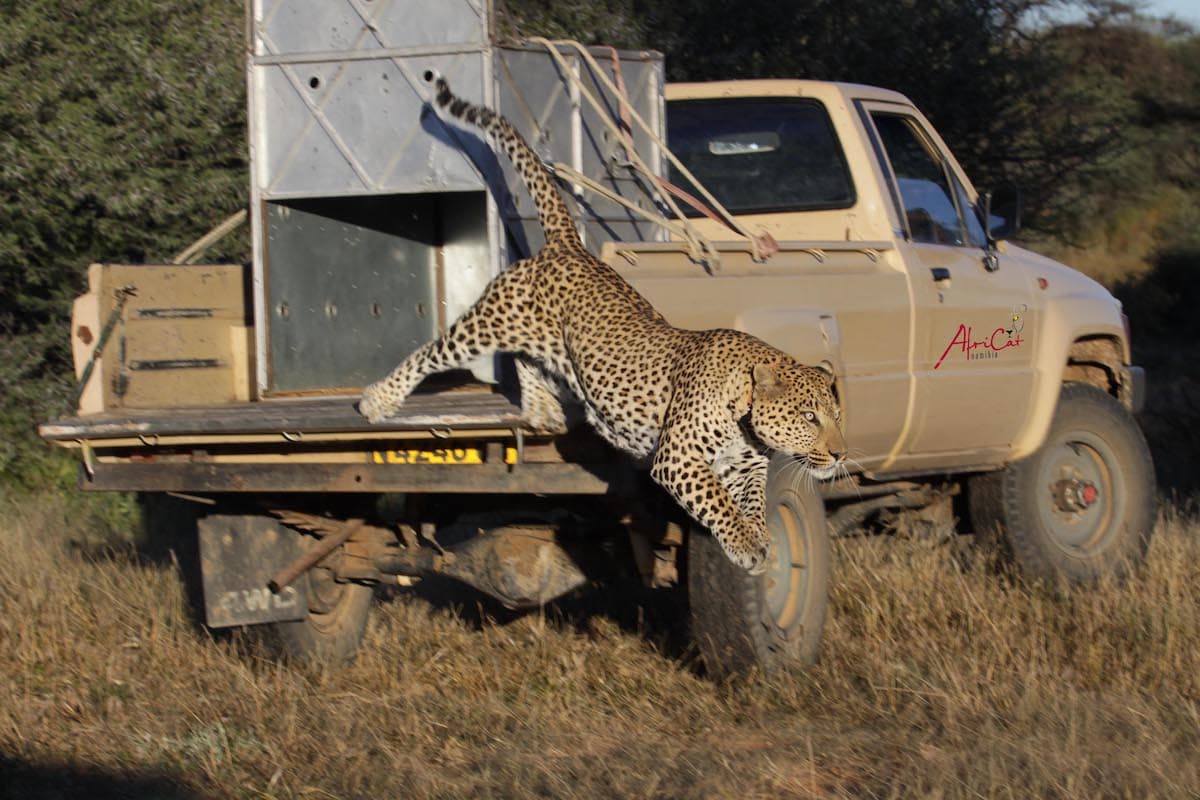
Radio collars help scientists at AfriCat track the movements and behavior of large carnivores. Here, a leopard—considered one of Africa’s Big Five animals—is re-released in Okonjima Nature Reserve after its radio collar is fitted with new batteries. Photo courtesy of AfriCat.
History of AfriCat: From Enemies to Friends
Within Namibia, the greatest threats to large cats are human-wildlife conflict, decreasing populations of wild prey, illegal trade and poaching, unsustainable trophy hunting, and habitat loss. Wild lands have been replaced by farms and ranches in many parts of Namibia, making it harder for hungry carnivores to find prey. So they go after cattle—and farmers often shoot or poison predators in order to protect their livestock.
The AfriCat Foundation was started by a family that had experienced the predator-farmer conflict first hand.
A Family Farm
In 1970, the Hanssen family bought a cattle ranch about 100 miles south of Etosha National Park. They lost 20 to 30 calves each year to predators and tried the only solutions they knew of: hunting, trapping, and inviting trophy hunters on their land. But these did not reduce their losses.
After seeing this cycle repeat every year, the family tried another approach. They created protected corrals for pregnant cows and young calves. As calves grew bigger, they became less appealing prey. So when they turned four months old, it was safe to release calves into grazing lands with the rest of the herd. Livestock losses dropped to just two or three every year.
A Sanctuary for Wildlife
In 1992, the Hanssens converted their 15,000-acre cattle ranch into a conservation haven that would become Okonjima Nature Reserve, the home of AfriCat. The reserve protects large predators from threats like human-wildlife conflict, poaching, and trophy hunting, allowing them to express their natural behaviors and enjoy the hunt without causing harm to local farms.
By 2000, they completed an enclosed 11,000-acre nature sanctuary for rehabilitating injured and orphaned carnivores. By 2010, Okonjima Nature Reserve hit 55,000 acres—that’s 85 square miles!
For many years, AfriCat was best known for running the largest cheetah and leopard rescue and release program in the world. Its groundbreaking work on Okonjima Reserve showed that rehabilitated cheetahs can adapt to different environments and learn how to survive in the wild.
Just as animals must adapt, AfriCat has also adapted. As Okonjima Reserve’s leopards and brown hyaenas multiplied, newly released cheetahs had a hard time competing. Since fences keep animals from leaving the reserve to protect neighboring farms, the territory of every predator was affected with each cheetah release. In 2019, AfriCat stopped releasing cheetahs on Okonjima Nature Reserve. Previously released cats and their offspring still live there.
AfriCat Today
Okonjima Nature Reserve and the AfriCat Carnivore Care Centre continue to provide refuge to cats who were already a part of the rehabilitation program prior to 2019. Scientists conduct research to learn more about the behavior of carnivores in a closed reserve. They share their findings to improve the work of similar reserves throughout Africa.
Education is another key aspect of the AfriCat program. The group invites university students, local and from abroad, to spend time in the reserve learning about living in harmony with predators. It also shares valuable information learned over the past 30 years with local farmers to try to reduce livestock losses in a way that respects the role of carnivores in Namibia’s ecosystem.
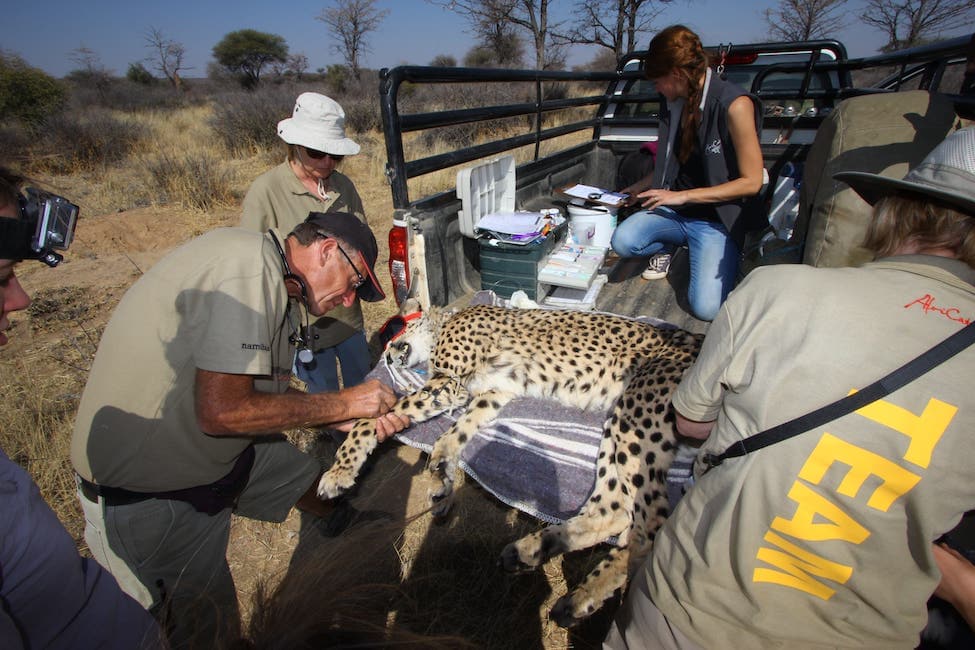

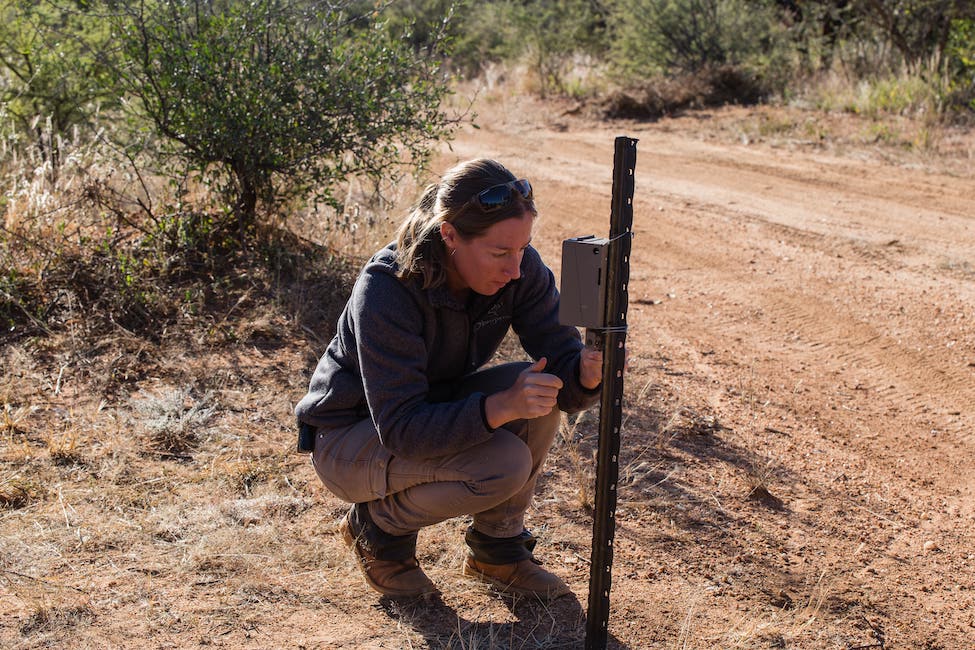
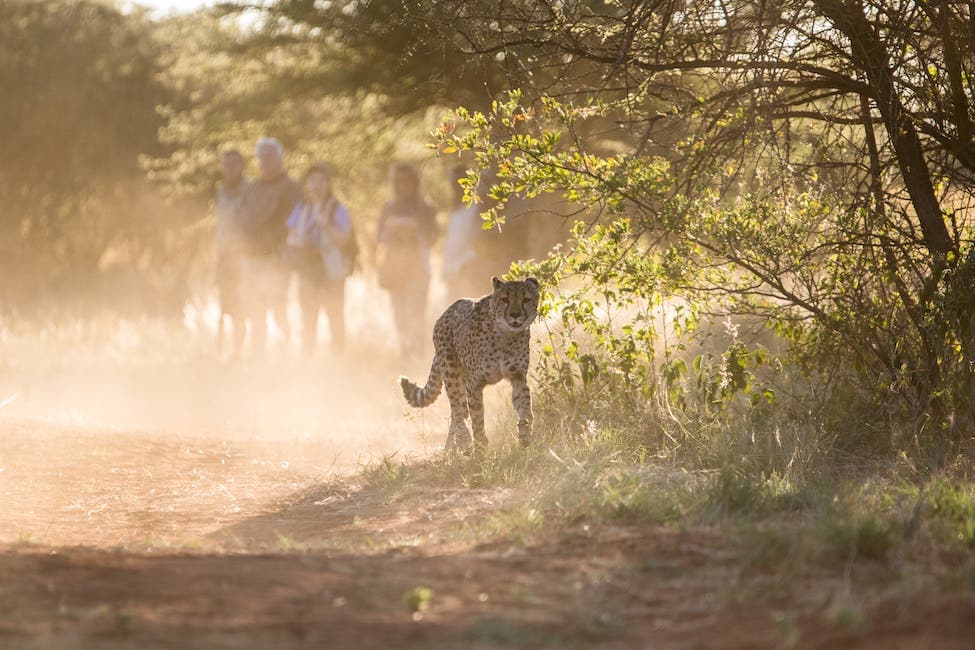
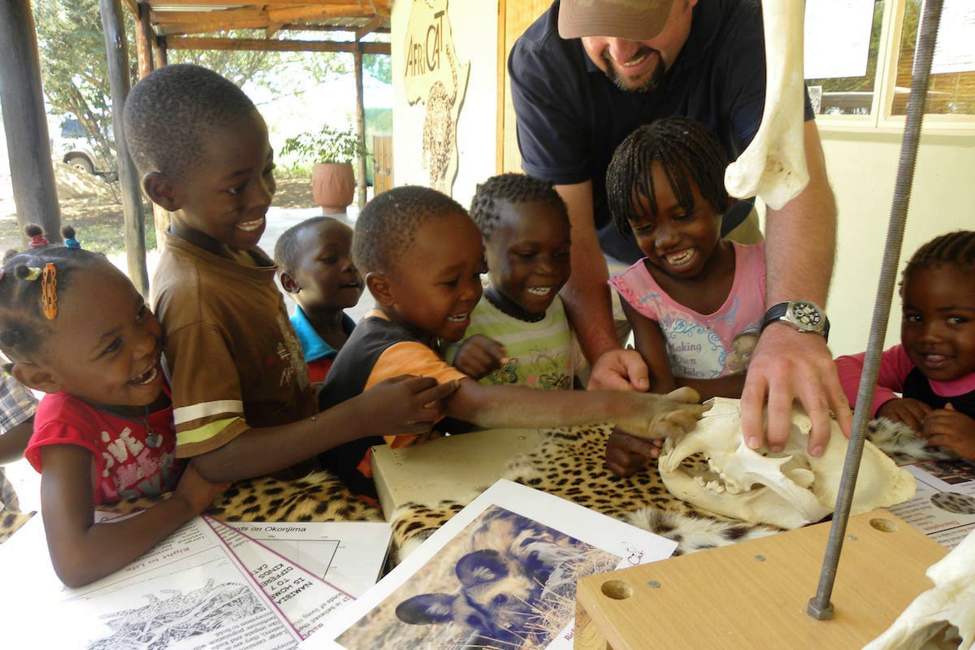
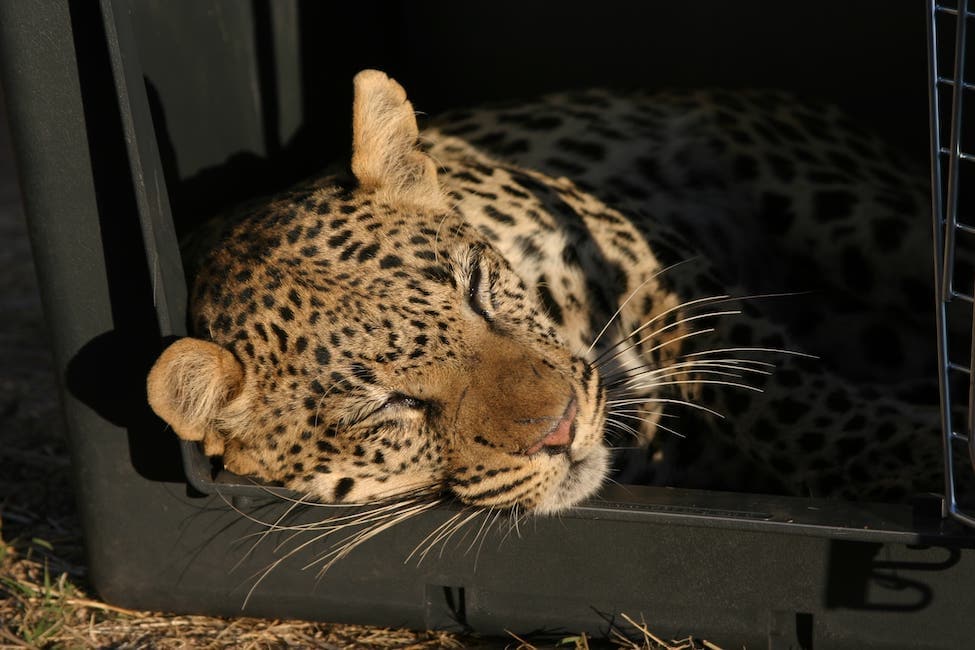
AfriCat monitors and provides veterinary care to animals such as brown hyenas, cheetahs, and leopards at Okonjima Nature Reserve and the AfriCat Carnivore Care Centre, and educates schoolchildren about large carnivores at its Environmental Education Centre. Photos courtesy of AfriCat.
The AfriCat Carnivore Care Centre at Okonjima
AfriCat’s Carnivore Care Centre is a sanctuary for a small number of cheetahs, leopards, and lions that cannot live in the wild.
Many of these cats were kept as pets or raised by humans after their mothers were shot or poisoned by farmers. While hand-raised carnivores maintain their hunting instinct, they cannot be released in unprotected areas because they have lost their natural fear of people.
The cats at the Carnivore Care Centre serve as species ambassadors when people visit Okonjima. One of AfriCat’s guiding principles is “we only admire them from afar,” so don’t expect to pet the cats. However, watching the cats as they eat and engage in other natural behaviors is just as rewarding. Seeing cheetahs and other predators up close, in a safe environment, is a powerful experience.
Scientific Research
When you visit, you’ll also have a chance to learn about AfriCat’s important research.
Leopard Monitoring
Africat has one of longest-running leopard-monitoring projects in Namibia. Research to date, including a census in 2016, has recorded the highest density of leopards in Namibia in the Okonjima Nature Reserve.
Research does show that the ecology of leopard in Okonjima is different—home ranges are smaller, density is higher, and there are behavioral differences to adapt to reduced opportunities for migration. AfriCat research today is therefore focused on better understanding the altered ecology of leopards in the reserve to ensure the population is sufficiently genetically diverse and sustainable.
This research can directly support the management of other enclosed protected areas and the establishment of new protected areas as a conservation strategy, in particular to counter the greatest threats to leopards in Namibia.
Pangolin Protection
A second research project of AfriCat is on the Temminck’s ground pangolin, which is the second biggest species of pangolin and the only one occurring in Namibia and southern Africa. This scale-covered mammal eats ants and termites and lives in burrow, making it a type of “eco-system engineer.”
AfriCat runs the only research project on free-roaming pangolin in Namibia. As very little is known about pangolins—they are extremely reclusive—Africat is studying the basic ecology of the mammal, including home ranges and density, social interactions between pangolins and with other species, burrow behavior, and reproductive and dispersal behavior.
This research aims to help conservationists find better ways to protect pangolins from threats to its survival. Poaching is an enormous problem, and more frequent droughts are also harming the ground pangolin—AfriCat recorded the death of over half of observed pangolins animals in the 2019 drought.
Visiting and Supporting AfriCat
The Okonjima model is a demonstration of how tourism can provide an economically viable, non-consumptive use of leopards. AfriCat receives most of its funds through visits to Okonjima Nature Reserve, so make it a must-see when you visit Namibia.
Whether you are on a self-drive safari or traveling with a guide, you can stop by for a day visit to the Carnivore Care Centre, or stay overnight at the reserve’s lodgings for the full experience.
Depending on how many days you stay, as an overnight guest you’ll have the opportunity to track leopards, rhinos, or pangolins; view cheetahs up close at the Carnivore Care Centre; enjoy guided bush walks; and take nighttime drives to view nocturnal animals such as caracals, honey badgers, and Cape porcupines. Walking trails offer excellent opportunities for bird watching—over 200 bird species have been identified here.
You can also make a donation at the AfriCat America website. (For other countries, visit the AfriCat headquarters donation page.)


